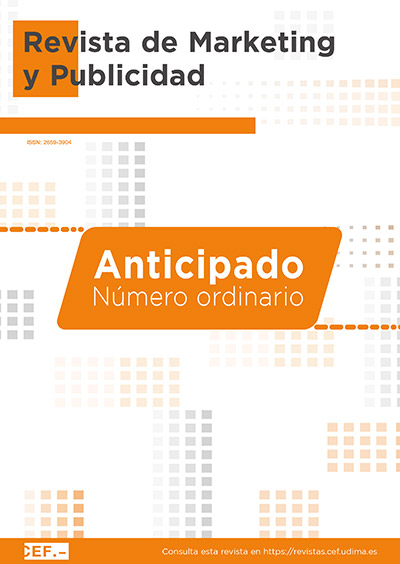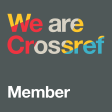Typology of content and degree of adaptation to the trends in brand communication on Instagram of the main Spanish fast food companies
DOI:
https://doi.org/10.51302/marketing.2024.24113Keywords:
brand communications, branding, digital marketing, social media, content marketing, Instagram, fast food, feed, reelAbstract
In recent years, social networks have become a fundamental part of the lives of millions of people. We could even speak of a revolution when it comes to understanding the new interaction relationships that, through screens and smartphones, have been generated: between people, and between people and brands, all of them users of social networks. This article develops its object of study through the analysis of the typology of content, and its degree of adaptation to the marketing trends in social networks, used by the most relevant Spanish fast food brands through Instagram. First, the usual practices and types of content in brand communication through Instagram are presented, which have been previously identified by reference sources in the field of digital marketing. Subsequently, we proceed to analyze and catalog the content published by the Spanish accounts of Burger King, McDonald’s and Telepizza, as the main fast food reference brands in Spain, during a given period of time and based on established reference criteria. To this end, the 20 publications made prior to May 1, 2024 by each of the accounts analyzed will be considered. The results and conclusions will seek to determine whether the content published by the brands has followed the content creation guidelines established as optimal by the expert bibliographic sources consulted.
Downloads
References
Bardin, L. (2002). El análisis de contenido. Akal.
Bermejo, I. (2023). ¿Quién gana la guerra de la hamburguesa? Esta es la cadena de comida rápida favorita en cada comunidad autónoma. La Razón. https://www.larazon.es/economia/quien-gana-guerra-hamburguesa-esta-cadena-comida-rapida-favorita-cada-comunidad-autonoma_2023070464a3ed2c41ef3d0001d1c54a.html
Brines, J. (2023). ¿Es McDonald’s el Goliat de sus franquiciados? Expansión. https://www.expansion.com/empresas/2023/09/27/6513c801e5fdea2b4a8b456e.html
Delgado, S. (2023). España engorda a pasos agigantados: así crece el negocio de la comida rápida en nuestro país. El Blog Salmón. https://www.elblogsalmon.com/economia/espana-engorda-a-pasos-agigantados-asi-crece-negocio-comida-rapida-nuestro-pais
Eiseman, L. (2021). Armonía cromática. Blume
Fernández, R. (2024). Distribución porcentual de los usuarios de Instagram en el mundo en 2024, por edad. Statista. https://es.statista.com/estadisticas/875258/distribucion-por-edad-de-los-usuarios-mundiales-de-instagram/
Gallegos, C. (2022). Así afectan Instagram y TikTok a nuestro bolsillo (y felicidad). El Economista. https://www.eleconomista.es/tecnologia/noticias/11871993/07/22/Asi-afectan-Instagram-y-TikTok-a-nuestro-bolsillo-y-felicidad.html
Haller, K. (s. f.). Branding – why red and yellow is used by the fast food industry. Karen Haller. https://karenhaller.com/journal/branding-why-red-yellow-is-used-by-the-fast-food-industry/
Higueruela, G. (2023). Comida basura: consecuencias y riesgos para la salud. Menshealth. https://www.menshealth.com/es/nutricion-dietetica/a43545260/comida-basura-consecuencias-riesgos-salud/
Hirose, A. (2023). We Answered All Your Instagram Reels Audio Questions. Hootsuite. https://blog.hootsuite.com/instagram-reels-audio/
Hirose, A. (2024). Reels de Instagram en 2024: Una guía completa para empresas. Hootsuite. https://blog.hootsuite.com/es/instagram-reels/
Instagram (2017). Presentamos las historias destacadas y el archivo de historias. Instagram blog. https://about.instagram.com/es-la/blog/announcements/introducing-stories-highlights-and-stories-archive#
Kotler, P., Kartajaya, H. y Setiawan, I. (2020). Marketing 4.0. Lid.
Lenis, A. (2023a). Carrusel en Instagram: qué es, cómo hacerlo y ejemplos. HubSpot. https://blog.hubspot.es/marketing/como-hacer-carrusel-instagram
Lenis, A. (2023b). Marketing de influencers: qué es, ventajas y cómo implementarlo. HubSpot. https://blog.hubspot.es/marketing/como-trabajar-con-influencers
Levy, D. (2022). Formatos para redes sociales: ¿Cuáles funcionan mejor? Lemon Digital. https://lemon.digital/formatos-para-redes-sociales/
Lianet, B. R. (2023). Manual práctico para dominar Instagram: Guía para Creadores de Contenido. Lianet B.R.
Martín, S. (2022). Directos en Instagram. Metricool. https://metricool.com/es/directos-instagram/
Montells, L. (2024). Tamaño de las imágenes para redes sociales: guía 2024. Metricool. https://metricool.com/es/tamano-imagenes-redes-sociales
Moreno, J. (2023). Qué es un copy, cómo se crea y ejemplos exitosos. HubSpot. https://blog.hubspot.es/marketing/que-es-un-copy
Newberry, C. (2024). Vídeos de Instagram: especificaciones, consejos y ejemplos para 2024. Hootsuite. https://blog.hootsuite.com/es/videos-de-instagram-especificaciones/
Pérez, R. (2024). Tamaño fotos y vídeos Instagram. Richi Pérez. https://richiperez.com/blog/tamano-fotos-y-videos-instagram/
Rodríguez Ardura, I. (2020). Marketing digital y comercio electrónico. Ediciones Pirámide.
Rodríguez, C. (2024). Una imagen vale más que mil palabras: Fotografía o Vídeo. Hola marketing. https://holamarketing.online/fotografia-o-video-en-redes-sociales/
Romero, I. (2021). Cuál es el máximo de caracteres por cada red social. Metricool. https://metricool.com/es/caracteres-por-cada-red-social/
Sanagustín, E. (2020). Marketing de contenidos: Estrategias para atraer clientes a tu empresa. Anaya Multimedia.
Sanagustín, E. (2022). Estrategia de contenidos: Técnicas para que tu empresa crezca. Eva Sanagustín Fernández.
Santos, D. (2024). Marketing en redes sociales: definición y ejemplos. HubSpot. https://blog.hubspot.es/marketing/marketing-redes-sociales
Sicilia, M., Palazón, M., López, I. y López, M. (2021). Marketing en Redes Sociales. ESIC Editorial.
Terreros, D. (2023). ¿Qué son los hábitos de consumo y qué factores influyen en ellos? HubSpot. https://blog.hubspot.es/marketing/habitos-de-consumo
Varangouli, E. (8 de octubre de 2021). Influencer Marketing: qué es y cómo crear una estrategia. Semrush. https://es.semrush.com/blog/guia-influencer-marketing
Downloads
Published
How to Cite
Issue
Section
License
Copyright (c) 2024 Santiago Mayorga Escalada, Juan Pelegrín Puertas

This work is licensed under a Creative Commons Attribution-NonCommercial-NoDerivatives 4.0 International License.





















